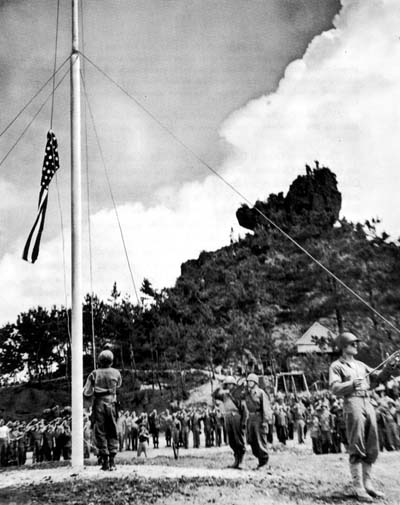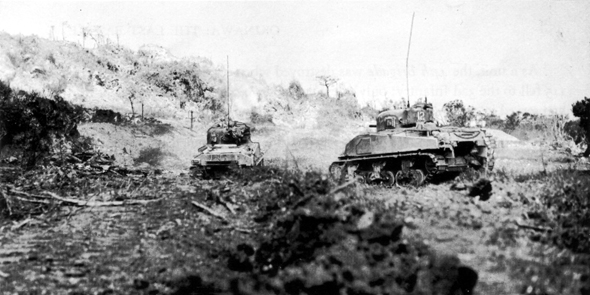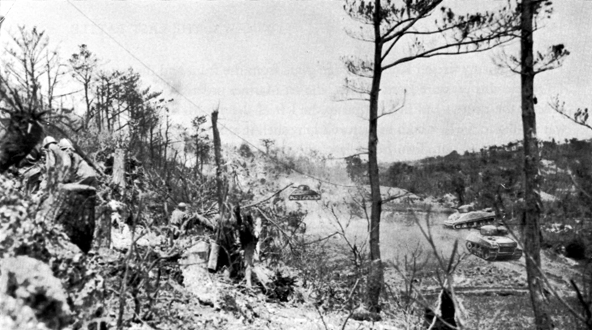21 June 1945
On Okinawa, the Japanese headquarters on Hill 89 is taken by the forces of the US 32nd Infantry Regiment, part of US 7th Division. The body of General Ushijima, commanding the Japanese 32nd Army is found nearby.
Five hours after 10th Army commander USMC Major General Geiger declares Okinawa “Secure” the Japanese high command delivered its last kikusui or “Floating Chrysanthemum” suicide strike of the Okinawa campaign.
Several Kamikaze slip through and strike ships at the at the Kerma Ritto anchorage. Sea Plane tenders Kenneth Whiting and Curtis are both struck and the Curtis is heavily damaged by fire.
LSM-59 is hit and sunk towing the hulk of the decommissioned USS Barry, which is also sunk in the same attack. The Barry’s new mission was to be a kamikaze decoy, for which it succeeded sooner than intended.

RAISING THE AMERICAN FLAG on 22 June denoted the end of organized Japanese resistance.
22 June 1945
The US Navy suffers a suicide strike on LSM-213 at Kimmu Wan. The landing ship suffers heavy structural damage with three killed and 10 wounded.
At Nakagusuku Wan the beached LST-534 suffers a bow door strike from a Kamikaze with three killed and 35 wounded. The nearby USS Ellyson is near missed by a Kamikaze with one killed and four wounded.
Radar Picket Station 15, with USS Massey and USS Dyson present, is heavily attacked, but the fighter cover killed 29 out of an estimated 40 attackers without damage to either ship.
On Okinawa, the battle with organized ground forces has ended. The 10th Army starts a 10 plan to mop up remaining unorganized Japanese ground forces.
American forces have lost 12,500 dead and 35,500 wounded.
In the air, the American forces have lost 763 planes.
The Japanese losses include 120,000 military and 42,000 civilian dead.
For the first time in the war, there are a relatively large number of Japanese prisoners: 10,755.
American reports claim the Japanese have lost 7,830 planes.
Including today’s suicide strikes, the US Navy had 36 ships sunk and 368 damaged by the end of the Okinawa campaign.
Okinawa Background — The Death of Generals Ushijima and Cho
Read more




